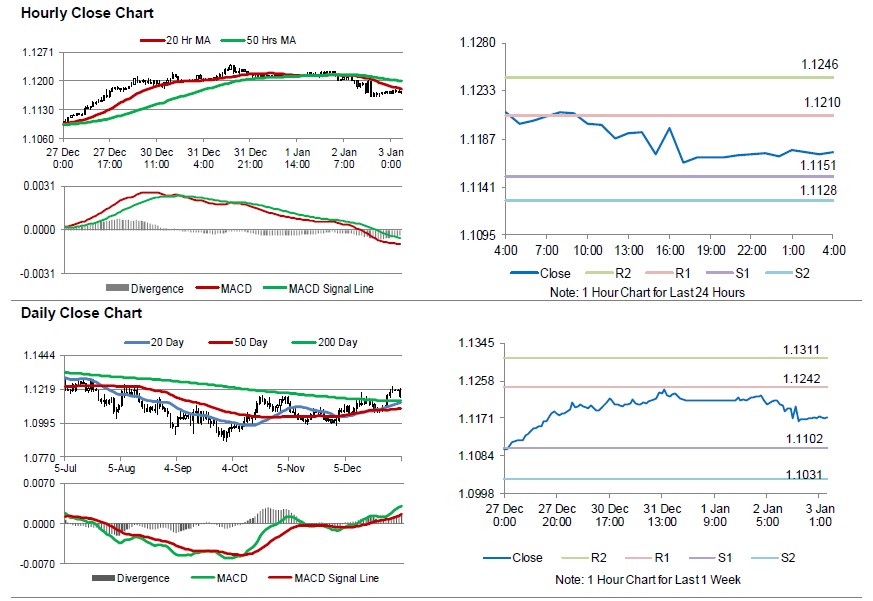For the 24 hours to 23:00 GMT, the EUR declined 0.42% against the USD and closed at 1.1173.
On the data front, Euro-zone’s final manufacturing PMI declined to a level of 46.3 in December, less than market anticipations and preliminary figures for a fall to a level of 45.9. In the prior month, the PMI recorded a reading of 46.9. Separately, in Germany, the final Markit manufacturing PMI fell to a level of 43.7 in December, less than market consensus and preliminary figures for a drop to a level of 43.4. In the preceding month, the PMI had recorded a reading of 44.1.
In the US, data showed that the final Markit manufacturing PMI declined to a level of 52.4 in December, compared to market expectations and preliminary print for a drop to a level of 52.5. The PMI had recorded a reading of 52.6 in the previous month. On the other hand, the US seasonally adjusted initial jobless claims unexpectedly dropped to a level of 222.0K in the week ended 27 December 2019, defying market anticipations for an advance to a level of 227.0K. Initial jobless claims had recorded a revised level of 224.00 K in the prior week.
In the Asian session, at GMT0400, the pair is trading at 1.1174, with the EUR trading slightly higher against the USD from yesterday’s close.
The pair is expected to find support at 1.1151, and a fall through could take it to the next support level of 1.1128. The pair is expected to find its first resistance at 1.1210, and a rise through could take it to the next resistance level of 1.1246.
Moving ahead, traders would await Germany’s unemployment rate and the consumer price index, both for December, set to release in a few hours. Later in the day, the US ISM manufacturing PMI for December and construction spending for November, will be on investors’ radar. Also, the FOMC meeting minutes will keep investors on their toes.
The currency pair is trading below its 20 Hr and 50 Hr moving averages.

